
Gardner, officially the City of Gardner, is a city in Worcester County in the Commonwealth of Massachusetts, United States. The population was 21,287 in the 2020 census. Gardner is home of such sites as the Blue Moon Diner, Dunn State Park, Gardner Heritage State Park, and Mount Wachusett Community College.

Wakefield is a town in Middlesex County, Massachusetts, United States, in the Greater Boston metropolitan area, incorporated in 1812 and located about 12.5 mi (20.1 km) north-northwest of Downtown Boston. Wakefield's population was 27,090 at the 2020 census. Wakefield offers an assortment of activities around the local lake, Lake Quannapowitt.

Wicker is a method of weaving used to make products such as furniture and baskets, as well as a descriptor to classify such products. It is the oldest furniture making method known to history, dating as far back as 5,000 years ago. Wicker was first documented in ancient Egypt, then having been made from pliable plant material, but in modern times it is made from any pliable, easily woven material. The word wicker or "wisker" is believed to be of Scandinavian origin: vika, which means "to fold" in Swedish. Wicker is traditionally made of material of plant origin, such as willow, rattan, reed, and bamboo, though the term also applies to products woven from synthetic fibers. Wicker is light yet sturdy, making it suitable for items that will be moved often like porch and patio furniture. Rushwork and wickerwork are terms used in England. A typical braiding pattern is called Wiener Geflecht, Viennese Braiding, as it was invented in 18th century Vienna and later most prominently used with the Thonet coffeehouse chair.

Wakefield station is an MBTA Commuter Rail station in Wakefield, Massachusetts served by the Haverhill Line. The station has two side platforms, which are not accessible, serving the line's two tracks. The station building, constructed in 1889, was listed on the National Register of Historic Places in 1989 as Wakefield Upper Depot.

The Heywood-Wakefield Company Complex is a historic factory complex at 206 Central Street in Gardner, Massachusetts. The complex, located at the corner of Central and Elm in West Gardner, has its origins in a chair manufacturing business established in 1826 by the Heywood brothers. The current brick factory buildings date to the later decades of the 19th century. The property was listed on the National Register of Historic Places in 1983.

The West Gardner Square Historic District encompasses the historic commercial, civic and industrial downtown area of Gardner, Massachusetts. Developed industrially beginning in the early 19th century, the area now boasts a concentration of late 19th and early 20th century commercial, civic, and industrial architecture. It was listed on the National Register of Historic Places in 1985.

The Common Historic District is a historic district encompassing the civic and institutional heart of Reading, Massachusetts. The district is centered on the town common, at the intersection of Main and Salem Streets. The common has been communally owned since at least 1737, with the original burying ground to the north. In 1769 the area's first meeting house was built, giving the area a sense of identity separate from portions of Reading that would later be set off as Wakefield and North Reading. Since then the area has become a focal point for religious and civic institutions in the town.
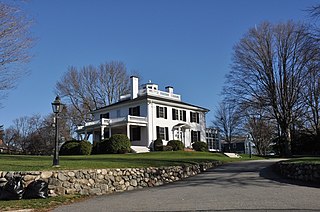
Beebe Homestead, also known as the Lucius Beebe House and Beebe Farm, is a historic Federal period home at 142 Main Street in Wakefield, Massachusetts, which was built during the federal era that extended from the late 18th-century into the 1820s. It is suspected to have been remodeled into the federal style from an earlier home built in circa 1727. It overlooks Lake Quannapowitt, and according to a 1989 study of historic sites in Wakefield, the house is "one of Wakefield's most imposing landmarks." The property was added to the National Register of Historic Places in 1989.

Wakefield Centre station is a former railway station at 57 Water Street (Route 129) in Wakefield, Massachusetts. Built in the early 1870s, it is a surviving element of the railroad infrastructure that enabled Wakefield's growth as an industrial center in the late 19th century. The depot was added to the National Register of Historic Places in 1989 as Centre Depot. As of 2008, the former depot serves as a restaurant.

The Common District encompasses the main civic center of Wakefield, Massachusetts. It is centered on the historic town common, just south of Lake Quannapowitt, which was laid in 1644, when it became the heart of Old Reading. The area was separated from Reading as South Reading in 1818, and renamed Wakefield in 1868. The 25 acre district includes the buildings that line the common on Common Street and Main Street, which include the town hall, public library, YMCA, post office, and several churches. It was listed on the National Register of Historic Places in 1990.
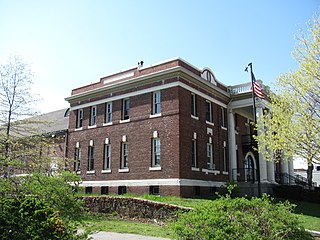
The Massachusetts State Armory is a historic armory in Wakefield, Massachusetts. Built in 1913, it is a fine local example of Classical Revival architecture, and a symbol of the town's long military history. The building was listed on the National Register of Historic Places in 1989. It presently houses the Americal Civic Center, a local community center.

Flanley's Block is a historic commercial building at 349–353 Main Street in Wakefield, Massachusetts, US. Built about 1895, it is a well-preserved local example of late 19th-century Italianate commercial architecture. The building was listed on the National Register of Historic Places in 1989.

The House at 5 Bennett Street in Wakefield, Massachusetts, is also known as the Wakefield House for Aged Women, and is one of the largest houses in Wakefield's Junction District. The original part of the house was built sometime between 1875 and 1881, with Italianate styling. It was probably built for an executive of the Wakefield Rattan Company. In 1894 the house was purchased by the Wakefield House for Aged Women, a charity established by local Protestant churches, and significantly expanded. During this major alteration some of the house's Italianate details were copied, and a Queen Anne style porch was added.
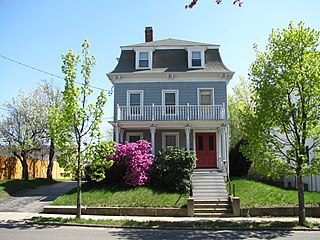
The House at 12 West Water Street in Wakefield, Massachusetts is a rare local example of a Second Empire house. The wood-frame house was built around 1860, and has two full stories, and a third beneath the mansard roof. It is three bays wide, with a wide double-door entry, and a porch across the front with elaborately decorated posts. The house may have been built by Cyrus Wakefield, owner of the Wakefield Rattan Company, and sold to a company employee. A later owner was George Cox, who owned a billiard parlor in the town center.

South Reading Academy is a historic former school building at 7 Foster Street in Wakefield, Massachusetts, US. Built in 1828–29 for the First Baptist Church, the building has served as a religious school, public high school, clubhouse, and commercial space. The building was listed on the National Register of Historic Places in 1989.

The Wakefield Trust Company is a historic commercial building at 371 Main Street in Wakefield, Massachusetts. Built in 1924, it is one of three buildings on the west side of Main Street that give the town center a strong Classical Revival flavor. The building was listed on the National Register of Historic Places in 1989.

Cyrus Wakefield was a manufacturer of rattan furniture and carriage bodies, and the founder of the Wakefield Rattan Company, the largest manufacturer of rattan products at the time. The town of Wakefield, Massachusetts, is named for him.
The Heywood-Wakefield Company is an American furniture manufacturer established in 1897. It went on to become a major presence in the US. Its older products are considered collectibles and have been featured on Antiques Roadshow.
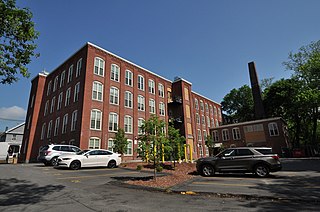
The W. S. Reed Toy Company-Wachusett Shirt Company Historic District encompasses two adjacent properties at 41 and 45 Summer Street in Leominster, Massachusetts. The two properties were historically associated with the business operations of William S. Reed, a businessman who operated a toy manufacturing company among other concerns. The properties were listed as a historic district on the National Register of Historic Places in 2021.
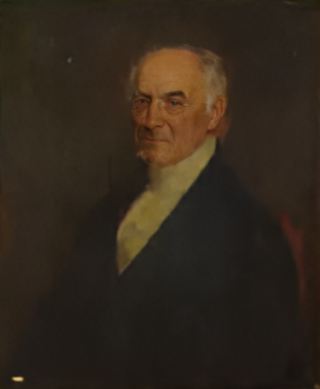
Burrage Yale was an American tin ware manufacturer and Justice of the Peace from Wakefield, Massachusetts. He was the town treasurer and the largest employer in the city. He gave his name to Yale Avenue and Yale Fire Station. He was also the first postmaster recognized in Washington, D. C., and the cofounder of South Reading Academy, with abolitionist minister, Cyrus P. Grosvenor.






















